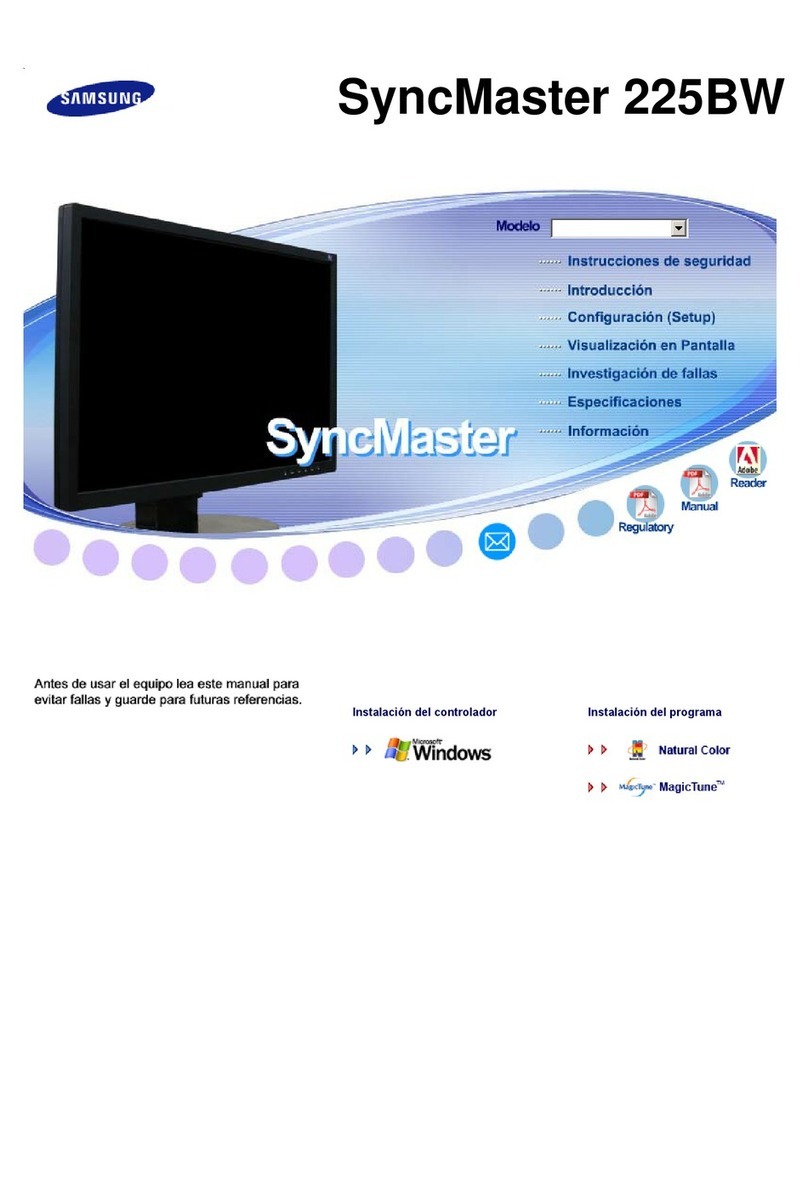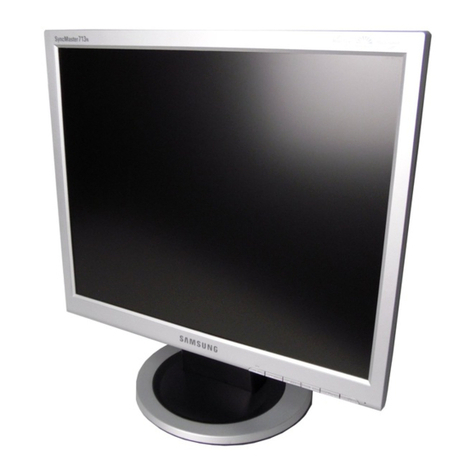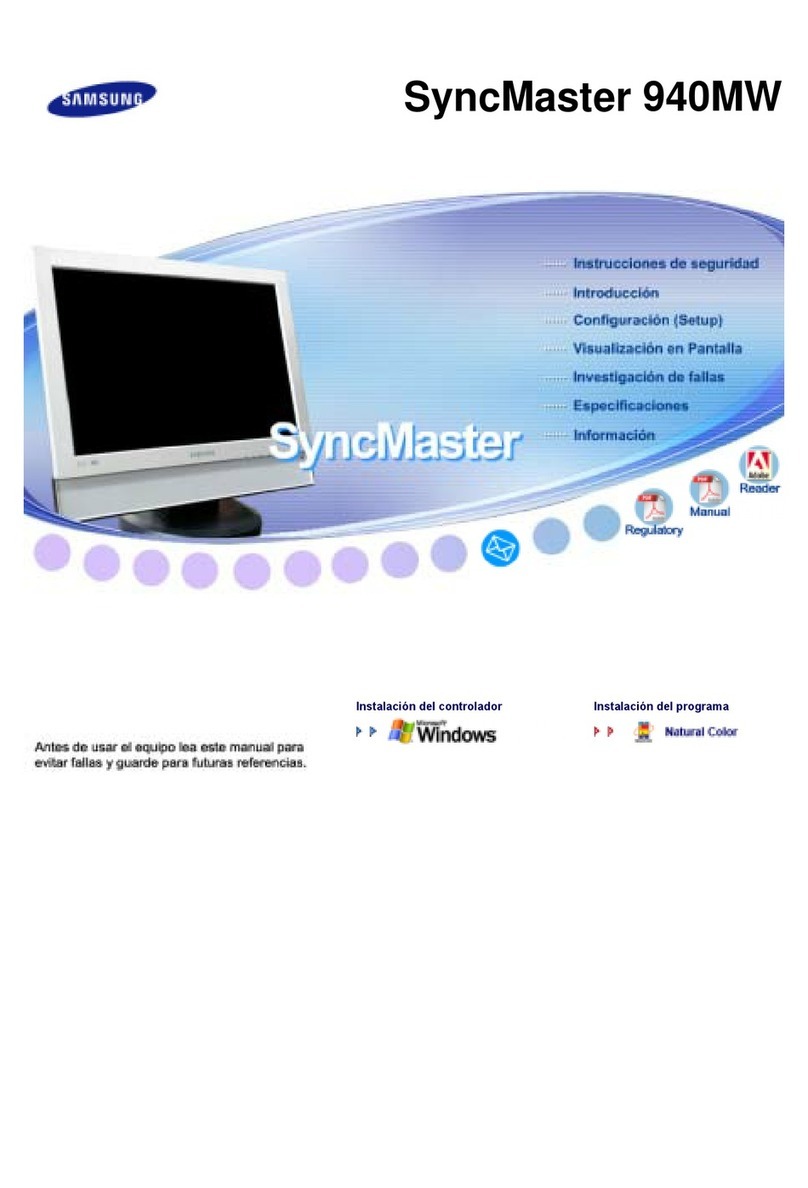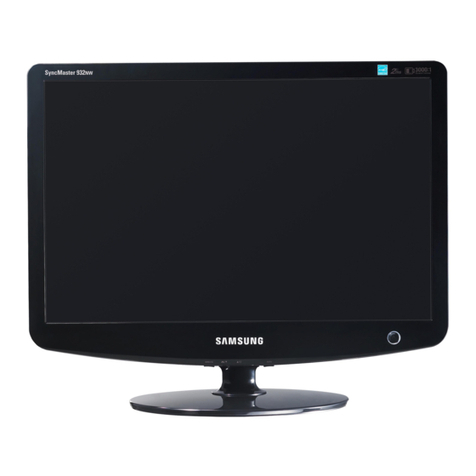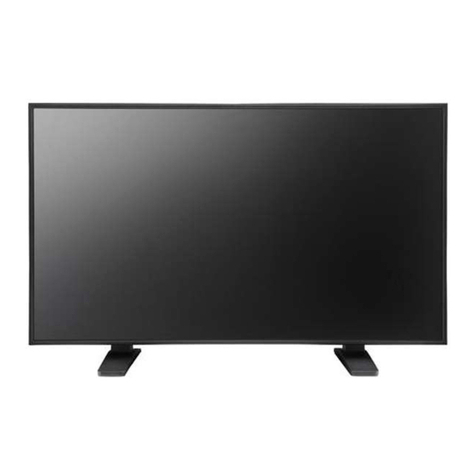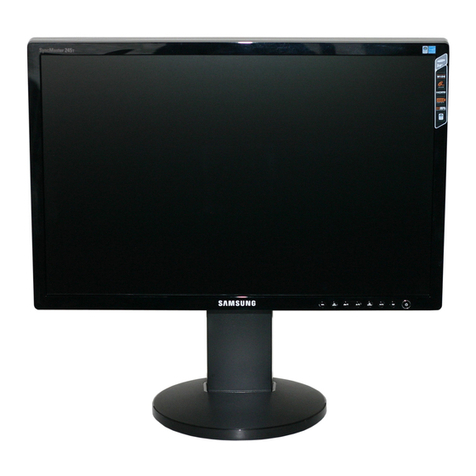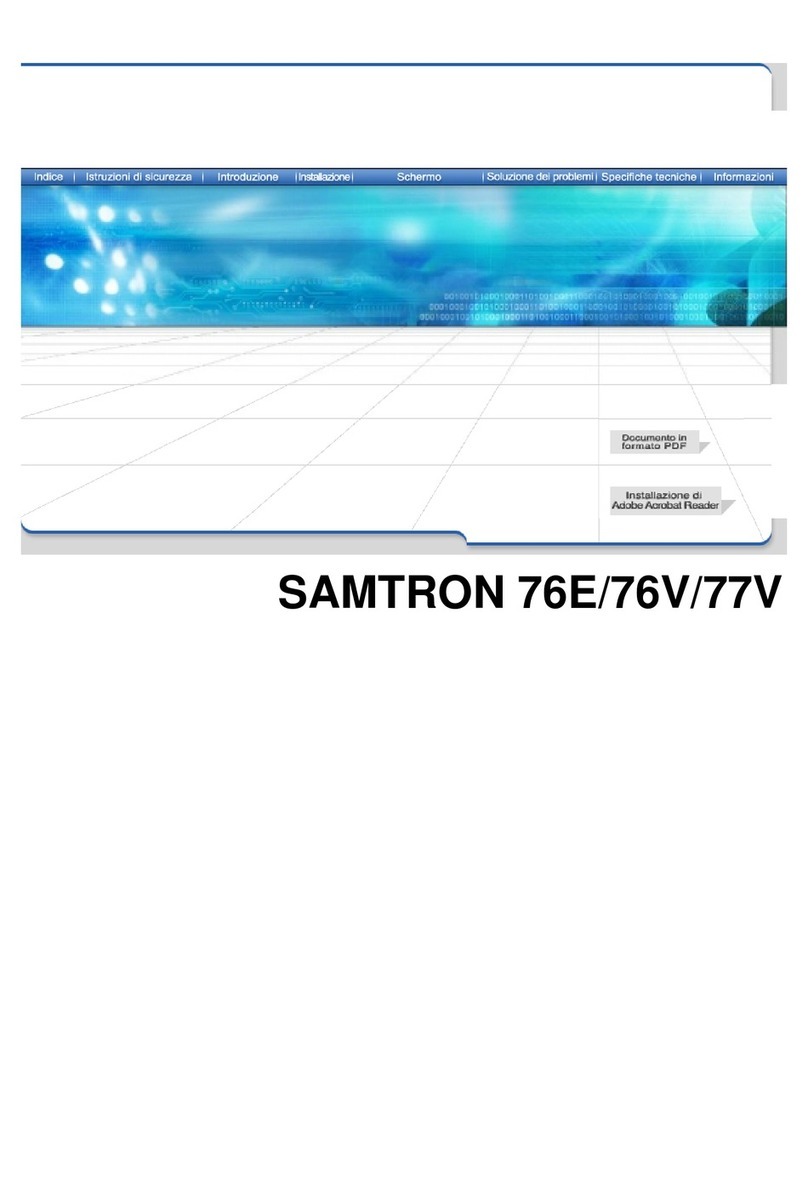• THEORY OF OPERATION
1.
POWER
SECTION
This design utilizes a discontinuous flyback topology
operating in current-mode. This results in a multiple
output
switcher who's
output
track well. No
output
filter
chokes
are
needed
and
slower diodes
can
be
used.
The fast transit
response
maintains picture
integrity. Cycle by cycle current limiting
makes
the
switcher short circuit proof.
Output Voltages:
LOCA
NO.: T603
TRANS NO. OUTPUT
VOLTAGE
REMARK
#3
+75V
DC
#4
+50V
DC
#6
+25V
DC
#2-
+8V
DC
#12
-8VDC
NC
2. MAIl\! SECTION
1) Horizontal
A
phase
lock loop
is
used
to
synchronize the
horizontal switch
to
the timing
pulses
from the
computer. Storage delay in
0303
2SC3636 (MJH
16006)
is
compensated by the PL
L.
Incoming H-sync level
is
translated
by
0301 then
fed into the input
of
the
phase
comparator.
Transistor
0304
watches the falling
edge
of
the
flyback pulse falls
to
within
a few volts
of
ground
a raising
edge
is
sent
to
the other
input
of
the PLL
phase
comparator.
The
phase
comparator
is
used
in
an
edge
look
mode. Integrated circuit IC301 MC14046 pin 13
is
in a high impedance mode most
of
the time.
If
the
raising
edges
fed into pins 3
and
14 do
not
coin-
cide, pin 13
goes
into a
low
impedance state
for
the time difference. Depending on which
edge
leads
the other, current
will
be
fed into
or
pulled
out
of
the
filter
capacitors C302
and
C303.
Voltage controlled oscillator input pin 9 deter-
mines the frequency
and
phase
of
the
output
sq
uare
wave
on pin 4. The free running frequency
and
look
range
is
set
by C301, R306, R305
and
VR301
and
should
be
preset below the operating
rate.
2)
Vertical Deflection
The
I
C201
TDA
1670 incorporates all
of
the
neces-
sary
functions
for
providing the yoke
of
a
monitor
4
or
television
receiver"
with
the current required
for
vertical deflection. Incorporated in silicon
are
a
synchronization oscillator, ramp generator, voltage
regulator, voltage doubler
and
power amplifier.
3) Focus Modulation
Each
part
of
a cathode ray tube focuses at a
different
voltage. The focus voltage at the center
may
be
several
hundred volts below the top
and
bottom
with
the right
and
left
sides
being at a
different level. To get the best looking picture
over the entire tube, the focus voltage
is
modu-
lated
with
both a vertical and horizontal signal.
The vertical parabola
is
fed into a high voltage
amplifier 0401. 0401 swings the focus voltage
at the vertical rate. Mixed in
with
this
signal
is
another
par.abola
at the horizontal rate which
comes from L401. The focus adjustment VR401
sets
the
DC
focus voltage
and
bias
on
0401.
3.
H/V
REGULATOR SECTION
The patented high voltage regulator sits between the
supply
and
the
top
of
the primary
of
the flyback
transformer. An onboard switching regulator
is
powered from the 12
volt
supply.
It
watched the
second anode voltage through a 300
mega
ohm
resisto in the flyback transformer. During flyback
the regulator pulls the top
of
the flyback transformer
negative
some
amount at the
same
time the flyback
pulse
is
raising the other end. In this way the
size
of
the pulse
as
seen
by the flyback transformer
can
be
varied
to
keep
the
second
anode voltage constant
under load.
4. VIDEO SECTION
1) Sync
Processing
To help understand the complex sync processing
please
refer
to
both the schematic
and
the timing
diagrams at the
end
of
this document.
2) Vertical
Vertical sync
is
detected by a low
pass
filter
and
an
'XOR'
gate.
Pin
2
of
P4
contains Vertical sync.
3) Horizontal
Horizontal sync undergoes
several
stages
of
pro-
cessing.
4)
Data
Centering
The
second
half
of
the IC102 (74LS221)
is
used
for
data centering. The one shot triggers
with
the
leading
edge
of
sync
and
time
out
with
the back
edge
of
the flyback pulse. The data centering
potentiometer should
be
set
to
center the picture
within
the raster.
